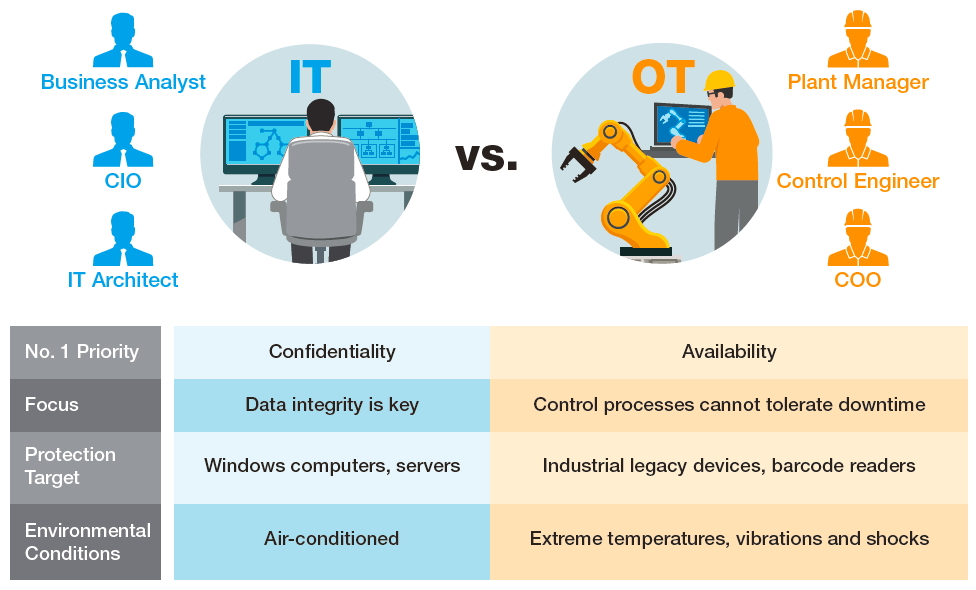|
|
Do You Think Your Industrial Networks Are Secure?In order to realize the benefits of the Industrial Internet of Things (IIoT), industrial networks are increasingly being connected to IT networks and the Internet. As a result of this changing landscape, industrial cybersecurity has become a major concern for business owners, as there is a real possibility that cyberattacks will significantly impact business operations and therefore profits. Despite this, a significant number of people are still under the misapprehension that industrial networks are secure because hackers do not understand ICS, PLCs, and SCADA systems, or believe that their facilities will not be targeted because they are running a medium-sized business. However, this is an outdated belief that is no longer true for modern industrial networks. A Wake-up CallSince 2010, there have been several sophisticated cyberattacks, such as Stuxnet and Industroyer, that targeted ICS networks. These incidents have served as a stark reminder to owners of critical applications, such as power plants, that their facilities cannot endure downtime for even a few seconds, as it can have a tremendously negative impact on their business operations. Furthermore, research by the U.S. government organization ICS-CERT has shown that the energy and critical manufacturing industries are the most vulnerable to cyberattacks. This research is finding its way to the top management, where they are beginning to launch company-wide initiatives to enhance their cybersecurity solutions and assign both IT and control engineers to commence research and deploy security measures that will keep their industrial networks secure. A Slew of ChallengesSeveral challenges need to be overcome before an effective security policy can be implemented. Many years ago, when IT personnel first defined cybersecurity policies for companies and started deploying firewalls between network zones, control engineers quickly discovered that their critical control commands could not be delivered to their destinations because the firewall blocked network traffic. This issue occurred because IT networks were not built with the correct type of infrastructure to support the industrial cybersecurity measures that are becoming essential for modern-day networks. For communication across industrial networks, the emphasis is very much on high-quality performance and availability, which is in contrast to the security requirements from IT personnel that focus on confidentiality. Typically, several industrial protocols are implemented simultaneously in industrial networks, making it difficult to meet the minimal latency requirements for machine-to-machine (M2M) communications. Another obstacle that has to be overcome is that the equipment at field sites and the software running on devices are different for OT and IT engineers, making the task of implementing security measures even more frustrating and troublesome. Therefore, it is essential to have a full understanding of industrial cybersecurity requirements in order to build and deploy secure industrial networks.  Things You Should Know When Implementing Industrial Cybersecurity
Control processes cannot experience downtime. If a control engineer has not experienced a cyberattack, the engineer will often be hesitant to deploy enhanced industrial cybersecurity features for their network as it involves additional time and effort, such as developing security patches, updating or adding new networking devices such as firewalls, and rebooting devices. All of these require operations to be temporarily stopped, which is something that control engineers want to avoid at all costs. Some industrial networks were built ten or even twenty years ago, and they did not incorporate security features into their design. A large number of industrial networks have not had their security features updated since initial deployment, making them more vulnerable to cyberthreats than other networks. Two main problems are often encountered by organizations when trying to secure industrial networks. The first stems from the fact that network operators are unaware of how secure the devices are when they are about to be deployed on the network. The second is that small and medium-sized enterprise (SME) vendors often do not adhere to the best cybersecurity practices, which can lead to several significant problems. Furthermore, within these organizations, there are often multiple industrial networks that use different operating systems and devices, making it difficult to take a unified approach to enhancing security. Enterprise networks are usually installed in air-conditioned environments; however, industrial networks are often located in harsh environments with extreme operating temperatures and vibrations. Thus, it is required to have industrial networking devices that can endure electrical interferences and pass vibration or shock tests. Best PracticesThere is no method or approach that offers 100% guaranteed protection against cyberattacks. However, several best practices can be followed to significantly decrease the chance that your network will be infiltrated by a cyberattack. First, make sure your stakeholders are aware of the risks and provide them with policies, tools, and equipment to help them reduce those risks. Business owners should make every effort to ensure that IT personnel fully understand the importance of cybersecurity and how to protect their industrial networks. With the possibility of cyberthreats happening at any time, it is of paramount importance that every manufacturer of industrial infrastructure solutions has a robust approach to dealing with cyberthreats. Download the infographic to learn more or visit our website: www.moxa.com/security |
|
|||
| Copyright © 2019 Moxa Inc. All rights reserved. |
